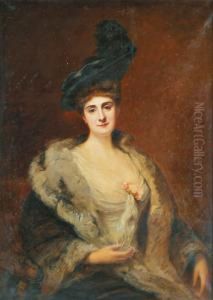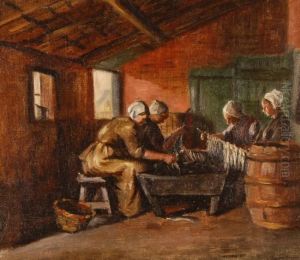Charles Mezzara Paintings
Charles Mezzara, born in 1826, was a prominent figure in the world of art and design during the 19th century, though not as widely recognized as some of his contemporaries. His contributions, particularly in the realm of decorative arts, reflect the rich interchange of ideas and aesthetic values that characterized the period. Born into a time of significant artistic and industrial transformation, Mezzara navigated the intersection of artistry and modernity with a distinctive flair that echoed the broader movements of Art Nouveau and the Arts and Crafts movement, although his work predates the full flourish of these styles.
Mezzara's career was marked by a versatile engagement with various mediums, including textiles, metals, and ceramics. His approach was deeply influenced by the eclectic tastes of the era, drawing from historical and contemporary sources to create objects that were both beautiful and functional. This dual commitment not only reflected the ethos of the Arts and Crafts movement, which advocated for the unification of art and labor and the celebration of craftsmanship but also anticipated some of the aesthetic principles of Art Nouveau, with its emphasis on organic forms and intricate patterns.
Despite his considerable skills and contributions, Charles Mezzara's legacy is somewhat obscured in the annals of art history, overshadowed by more prominent figures of his time. Yet, for those who delve into the studies of 19th-century decorative arts, Mezzara's work offers a fascinating glimpse into the transitional period that bridged the ornamental excess of the Victorian era with the more streamlined aesthetics of the early 20th century. He passed away in 1910, leaving behind a body of work that, while not as celebrated as some of his peers, remains an important testament to the creative ferment and aesthetic explorations of his time.

